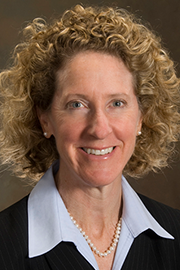AZoQuantum speaks to Dr. Celia Merzbacher, Executive Director at the Quantum Economic Development Consortium (QED-C®), about the state of quantum economy and QED-C's latest State of Global Quantum Industry report.
Could you please briefly introduce QED-C and your State of the Global Quantum Industry report?
The Quantum Economic Development Consortium (QED-C®) is the premier industry-driven consortium of stakeholders that aims to grow the quantum economy. QED-C was called for by the National Quantum Initiative Act in 2018 and was founded in 2019 with support from the National Institute of Standards and Technology (NIST). Managed by SRI International, today the consortium has roughly 240 members from 19 countries and representing the entire innovation chain, including researchers, component and system developers, and end users.
Toward its mission, QED-C and its members identify use cases of quantum technologies in the broad areas of sensing, communications and security, and computing and the barriers and gaps in technology, workforce, standards and policy that need to be addressed. The consortium brings industries, government, and academia together to overcome the barriers and gaps.
QED-C is a trusted voice of the quantum community. The 2025 State of the Quantum Industry Report is the first report by QED-C focused on assessing the quantum economy. The report includes details about the geographic distribution and size of quantum companies, public and private investments, workforce, revenues and IP. An exclusive feature is the assessment and forecast of revenues in the quantum computing and quantum sensing sectors.

Image Credit: NESPIX/Shutterstock.com
Your 5th annual quantum computing market assessment report highlights the expectation that utility-class quantum computing will arrive within 2 to 5 years. What technical or market shifts are driving this accelerated timeline, and how confident should we be in it?
Indeed our 2025 quantum computing market forecast reports that the majority (52 percent) of our survey respondents predict the availability of utility-class QC in 2-5 years. One-third estimate it will be more than five years, and 8 percent say it’s already here or will be here in the next year. While there are a variety of opinions in the quantum community, perhaps in part based on varying definitions of “utility”, published papers and reports show the industry is making steady progress thanks to advances in both hardware and error correction.
Given that on-premise quantum computing revenues are expected to match that of cloud-based solutions by 2027, what does this suggest about how user needs and infrastructure are evolving to support quantum adoption?
The shift toward on-prem installation suggests that users believe that quantum computing technologies are maturing to the point where the benefits of controlling system access outweigh those of using a shared resource. On-prem facilities are more likely to be preferred by large enterprises that are consumers of high-performance computing capabilities.
Download your PDF copy of the interview here
The report notes that most quantum computing companies plan to remain private over the next five years, despite significant growth in external funding. How do you interpret this cautious approach to going public?
Many factors go into the decision whether and when to go public. Increased access to funding, whether from government or from the private sector, may delay the decision to raise capital by going public.
Why do you think modelling and simulation are expected to remain the top revenue-generating quantum algorithms, and are there emerging applications you believe could challenge that?
Progress in algorithms for modelling and simulation of materials and processes suggests these may be the first areas of practical application of quantum computers. However, there are ongoing efforts to develop algorithms to address other types of problems such as optimization or machine learning, and advances are hard to predict. An algorithm in another area might cause a new set of applications to “leapfrog” into the lead.
Quantum sensing is still in the early stages of commercial development. How do you view the limited availability of QS technologies today, and what do you see as the main challenges holding back broader market deployment?
Actually, some quantum sensors are already commercially available, such as atomic clocks, and others are approaching deployment, such as magnetic field sensors for imaging. QED-C has released several in-depth reports on quantum sensing use cases, including in the areas of Precision Navigation and Timing (PNT) and biomedicine. While quantum sensors are rapidly being developed for applications from military to medicine, the markets are relatively small and fragmented, making the technology less attractive to typical VC investors. A QED-C working group is evaluating performance metrics for quantum sensors which will help to stimulate innovation and development and allow progress to be measured.
With aerospace identified as the most promising commercial end-user sector for quantum sensing, what specific applications or operational challenges make it such a strong fit for quantum-enabled solutions?
The 2024 QED-C PNT report outlined both military and commercial uses of quantum sensors. Aerospace applications of quantum sensors include PNT in situations where GPS is not available. This is a relatively near-term and potentially large market, which is reflected in the 2025 quantum sensing market assessment.
Looking ahead, how do you envision the balance of government and commercial investment shaping the broader quantum ecosystem?
Quantum is a critical and emerging technology but it is at an early stage. Both government and commercial investments are critical to realizing the national security, economic and societal benefits of quantum technologies.
Given the early stage of quantum technologies, government support to build bridges to the quantum future is essential. In the United States, it is imperative that Congress reauthorize the National Quantum Initiative, the primary piece of legislation responsible for advancing QIS in the U.S. The NQI authorizes critical programs and funding for research, development, demonstration, and application of quantum technologies across multiple agencies. It is also a key tool in creating a pipeline of quantum-ready talent for the workforce. As the State of the Global Quantum Industry report shows, there is an unmet demand for qualified talent with more than 7,400 quantum job openings.
Private sector investment is also critical to sustaining and growing innovation and bringing quantum’s benefits to the global public. Large technology companies are making big bets on quantum computers as are VCs. As noted in our report, VC global investments increased in value by 58 percent between 2023 and 2024. And U.S.-based quantum companies raised nearly $1.7 billion in 2024, far exceeding investments in other parts of the world.
What should stakeholders prioritize to ensure sustainable industry growth?
QED-C has a mandate to identify gaps and strategies to fill those gaps. Those gaps will be filled by the actions of various stakeholders, including industry, academia and government. University research can focus on fundamental challenges in areas ranging from materials and devices to architectures and algorithms. Businesses that make components, hardware systems and software will build on scientific advances and will focus on developing technologies and products that provide value to customers.
In addition to advancing the science and technology, workforce development is necessary to ensure that the quantum workforce pipeline is robust. A recent QED-C report found that traditional education fails to provide adequate hands-on, experiential learning, which is critical to attracting and developing a skilled quantum workforce. In the near term, programs that upskill existing workers with quantum-relevant skills can help fill the gap. Without a robust workforce, making the promises of quantum become a reality will be that much harder.
Each element of the innovation ecosystem has a role to play in achieving the benefits and value of quantum technologies, many of which have yet to be discovered. Working together the stakeholders can accelerate progress toward the quantum-enabled future.
About the Speaker

Dr. Celia Merzbacher is the Executive Director for the SRI-managed QED-C (Quantum Economic Development Consortium) and responsible for continuing to build the consortium and managing operational aspects. Previously, Dr. Merzbacher was Vice President for Innovative Partnerships at the Semiconductor Research Corporation, a consortium of the semiconductor industry. In 2003-2008, she was Assistant Director for Technology R&D in the White House Office of Science and Technology Policy, where she oversaw the establishment and coordination of the National Nanotechnology Initiative. She also served as Executive Director of the President’s Council of Advisors on Science and Technology (PCAST).
Disclaimer: The views expressed here are those of the interviewee and do not necessarily represent the views of AZoM.com Limited (T/A) AZoNetwork, the owner and operator of this website. This disclaimer forms part of the Terms and Conditions of use of this website.